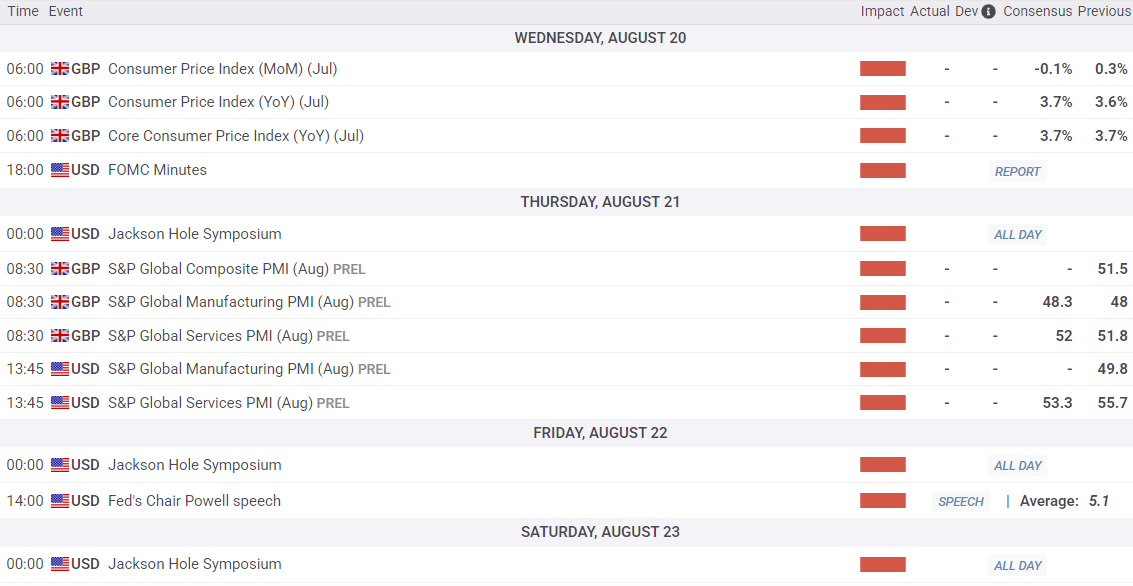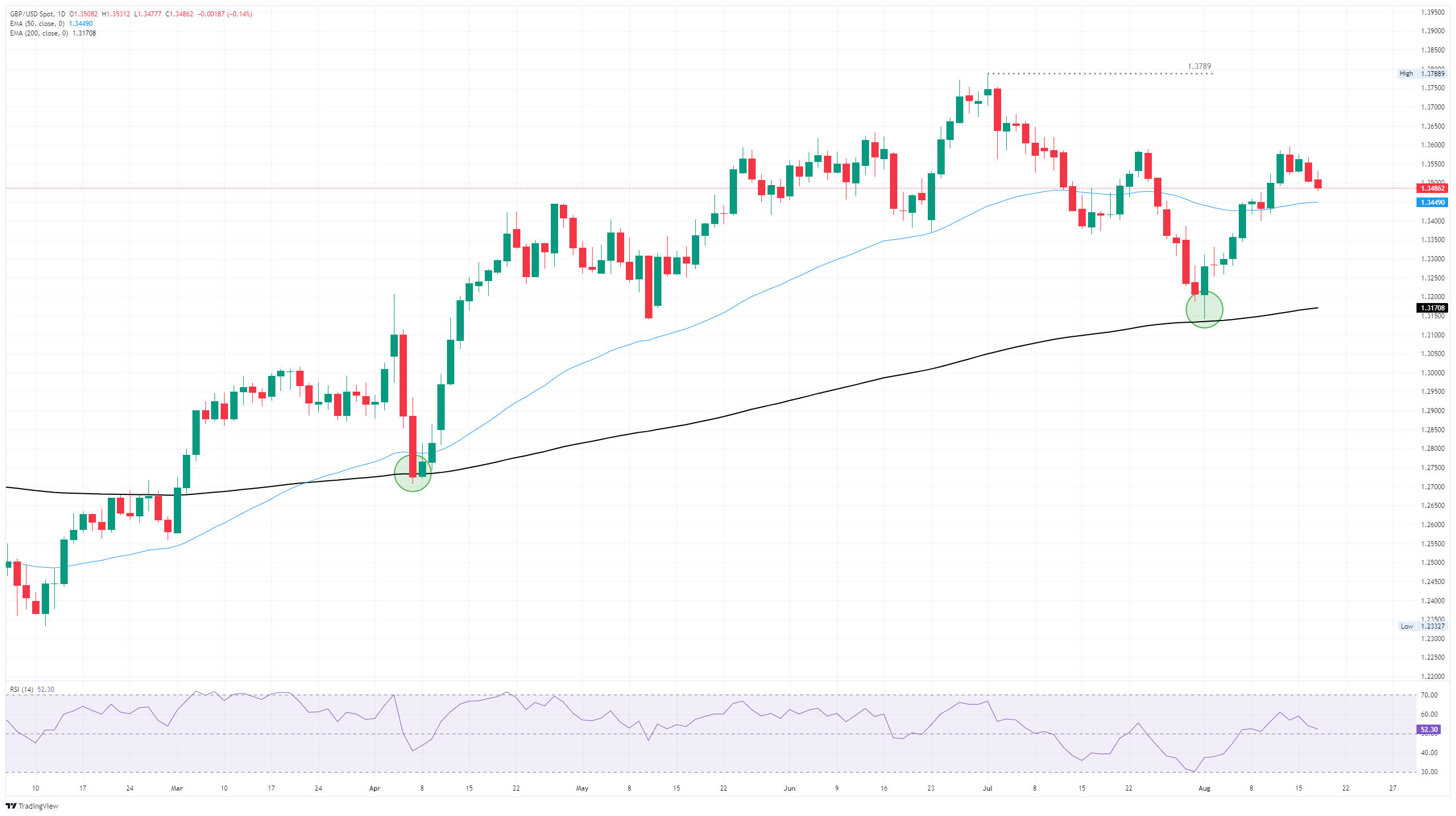- GBP/USD slipped back below 1.3500 on Tuesday.
- The back half of the week brings plenty of meaningful data and policy releases.
- UK CPI inflation data and Fed meeting minutes are on deck for Wednesday.
GBP/USD eased lower on Tuesday, edging back below 1.3500 as Cable traders await a reason to make a move. The trading week opened up with little of note on the economic data docket, leaving markets to react to headline flows that remained constrained.
All of that changes beginning on Wednesday. The United Kingdom’s (UK) latest Consumer Price Index (CPI) inflation figures will be released during the upcoming London market session, followed by the latest interest rate decision meeting minutes from the Federal Reserve (Fed) during the New York market hours.

Core UK CPI inflation is expected to hold steady near 3.7% YoY, while headline inflation figures for the same period are expected to tick up to 3.7% from 3.6%. The Fed’s latest meeting minutes are unlikely to reveal any new information, but will nonetheless give policy watchers fresh bones from the same carcass to gnaw on.
Global Purchasing Managers Index (PMI) will drop on Thursday for both the UK and the US, and this year’s Jackson Hole economic symposium also gets underway. UK PMI figures are generally expected to rise on both the services and manufacturing components, while a contraction in US services PMI figures is expected.
GBP/USD price forecast
Tuesday’s bearish continuation has put GBP/USD on pace for a fresh challenge of technical support at the 50-day Exponential Moving Average (EMA) near 1.3450. However, Cable is still firmly entrenched deep in bull country, with the pair trading well north of the 200-day EMA near 1.3170.
GBP/USD daily chart

Pound Sterling FAQs
The Pound Sterling (GBP) is the oldest currency in the world (886 AD) and the official currency of the United Kingdom. It is the fourth most traded unit for foreign exchange (FX) in the world, accounting for 12% of all transactions, averaging $630 billion a day, according to 2022 data.
Its key trading pairs are GBP/USD, also known as ‘Cable’, which accounts for 11% of FX, GBP/JPY, or the ‘Dragon’ as it is known by traders (3%), and EUR/GBP (2%). The Pound Sterling is issued by the Bank of England (BoE).
The single most important factor influencing the value of the Pound Sterling is monetary policy decided by the Bank of England. The BoE bases its decisions on whether it has achieved its primary goal of “price stability” – a steady inflation rate of around 2%. Its primary tool for achieving this is the adjustment of interest rates.
When inflation is too high, the BoE will try to rein it in by raising interest rates, making it more expensive for people and businesses to access credit. This is generally positive for GBP, as higher interest rates make the UK a more attractive place for global investors to park their money.
When inflation falls too low it is a sign economic growth is slowing. In this scenario, the BoE will consider lowering interest rates to cheapen credit so businesses will borrow more to invest in growth-generating projects.
Data releases gauge the health of the economy and can impact the value of the Pound Sterling. Indicators such as GDP, Manufacturing and Services PMIs, and employment can all influence the direction of the GBP.
A strong economy is good for Sterling. Not only does it attract more foreign investment but it may encourage the BoE to put up interest rates, which will directly strengthen GBP. Otherwise, if economic data is weak, the Pound Sterling is likely to fall.
Another significant data release for the Pound Sterling is the Trade Balance. This indicator measures the difference between what a country earns from its exports and what it spends on imports over a given period.
If a country produces highly sought-after exports, its currency will benefit purely from the extra demand created from foreign buyers seeking to purchase these goods. Therefore, a positive net Trade Balance strengthens a currency and vice versa for a negative balance.






